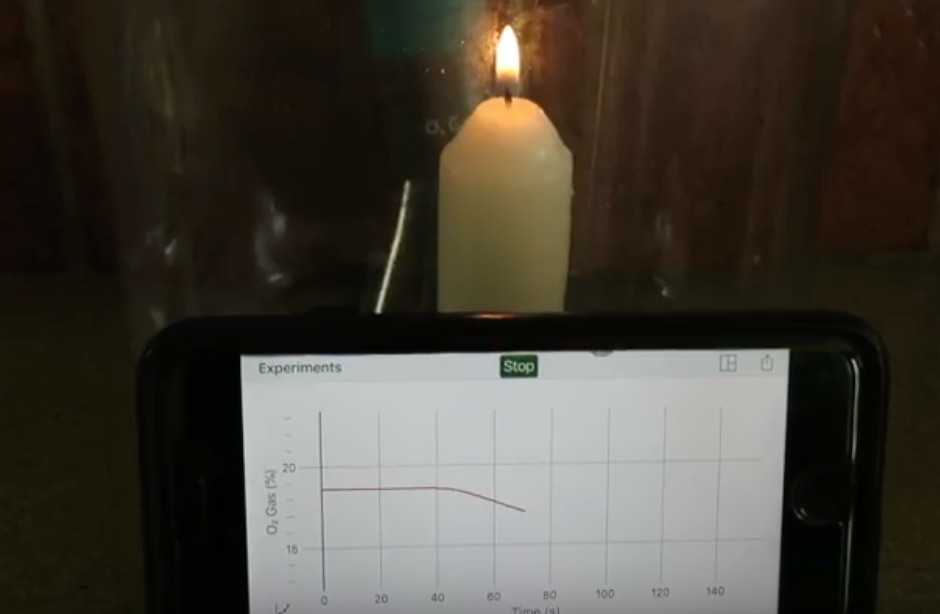Fire Air Dephlogisticated and the Vernier Go Direct Wireless Oxygen Sensor
By Martin Horejsi
Posted on 2018-08-01
Oxygen is one of those very cool elements that can both save a life and kill whether in absence or abundance. Oxygen is necessary for life as we know it, but yet it oxidizes one of the most common elements in the universe. Oxygen, to most students, is both a red ball on a model and a common test question answer. But to fully appreciate oxygen, students need to measure it. And as an odorless, tasteless, colorless gas, oxygen is filled with surprises, and also science essentials.
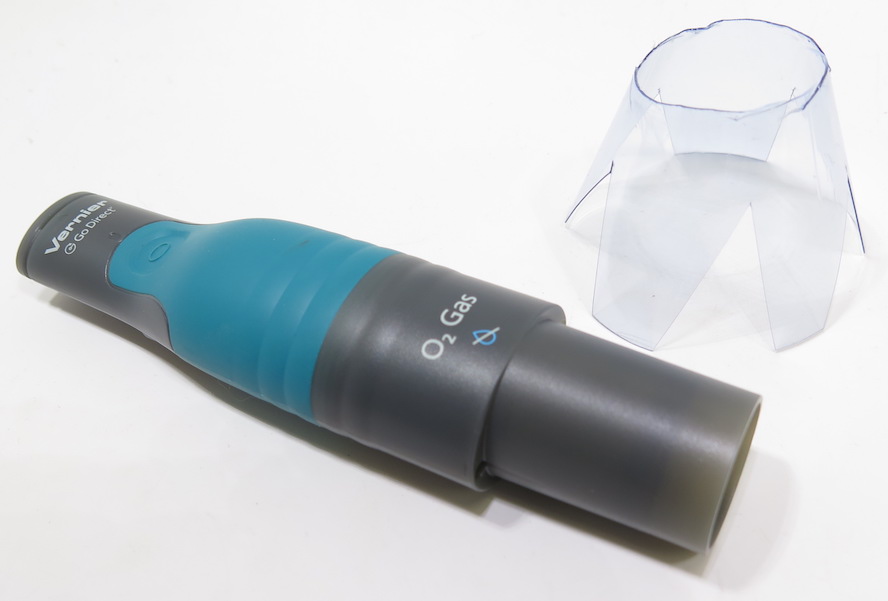
The history of the discovery of oxygen has plenty of twists and turns stretching from the second century BCE to the present. The path to discovery and understanding of oxygen is truly a who’s-who of science and philosophy. Whether Philo of Byzantium or Leonardo da Vinci or Robert Boyle or Antoine Lavoisier, or even Charles Darwin, the road to oxygen is paved with greatness. And don’t forget that Robert Goddard, the father of modern rocketry was the first to use liquid rocket fuels and one of those was liquid oxygen.
The Extinction of Words
A notable causality of the progression towards the understanding of oxygen was the word dephlogisticated. Back about the time America was just starting its grand experiment, around 1776, the word dephlogisticated was used to describe the portion of air now known as oxygen. Unfortunately for the word dephlogisticated, however, as the pace of science increased so the need for the word dephlogisticated decreased. Dephlogisticated, by the way, means dephlogisticated or without phlogiston. Ok, so much help with that. So a better explanation might be that phlogiston is a chemical involved with combustion. So dephlogisticated is the lack that chemical.

Regardless, the use of the word dropped of off a cliff after 1800. Presumably the speed of “viral” back in the 19th century would be on the speed of decades. So Dephlogisticated died a quick death over a 25 year period. By 1825, the word was at risk. By 1875, the word was on the endangered species list. And at the beginning fo the 21st century, the word was only found in museums and zoos and historical footnotes like this blog.
Plug n’ Play? What’s That?
The measurement of oxygen is a staple in science education, and O2 sensing has never been easier. With Vernier’s new Go Direct Oxygen Gas Sensor, the ability for students to measure relative oxygen concentration has never been easier or faster. Using Vernier’s Graphical Analysis 4 App, with self-identifying sensors, plug-n-play truly is plug-n-play even though we have recently transcended plugs.
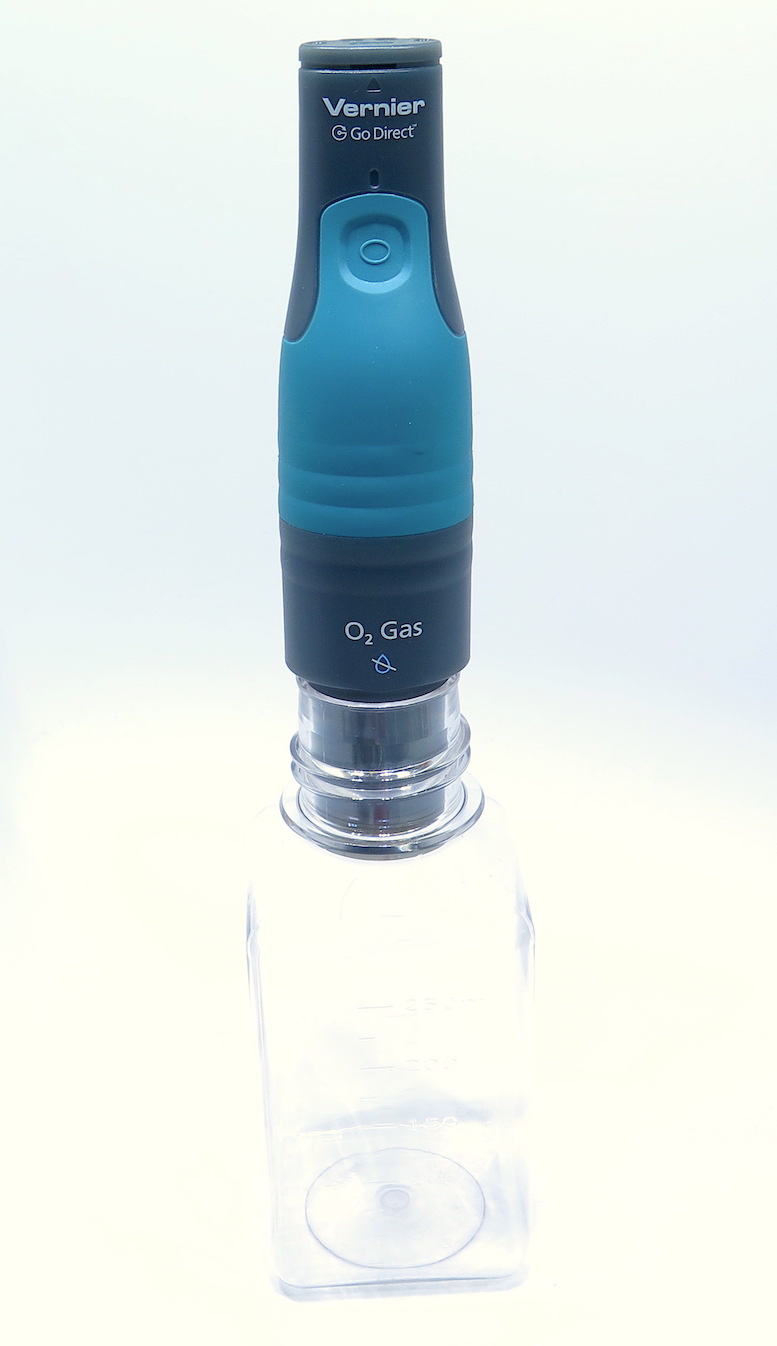
An interesting misconception surrounding the measurement of oxygen in the air is that while we refer to a lower amount of available O2 in the air as elevation increases, the concentration of oxygen as a percentage of overall air remains the same. However, since there is less overall air density, there is are fewer overall oxygen molecules for the breathing even though the percentage of (20.9ish%) oxygen is the same everywhere, up or down. In other words, the percentage of oxygen in the air is always about 20.9%, even on the summit of Mt. Everest so instead we use an “effective oxygen percentage” that is used to make an understandable approximation that provides usable information when dealing with living organisms. For instance, at sea level, the O2 effective O2 is 20.9%. At 5000 feet or 1500 meters, the effective O2 concentration is 17.3%. Ten thousand feet or 3000 meters is 14.4%, and 20,000 feet (6000m) is 9.7% effective oxygen. The top of Mt. Everest at over 29000 feet (8800m) is 6.9% effective oxygen or exactly one-third of the effective oxygen at sea level.

Mt. Everest. Photo from Wikipedia.
I’ve thought about how to explain this to students and I think a reasonable model would be a set of marbles of different colors. For every 100 marbles, there will be 21 red ones (oxygen), 78 blue ones (nitrogen), and one mostly green one (mostly argon, a fraction of CO2, and a pile of other odds and ends in concentrations no more than a thousandth of a percent). So at any given altitude, the proportion of marbles of a certain color remains the same. Its just that the marbles are spread throughout a larger volume due to the lower atmospheric pressure. As atmospheric pressure drops, so too does the ability of the lungs to exchange the gas.

The Vernier Go Direct O2 wireless sensor in airline back seat pocket.
The Vernier Go Direct O2 Gas Sensor is one of two O2 sensors in the Vernier lineup. As a wireless probe the Vernier Go Direct O2 Gas Sensor provides all the necessary capabilities of an O2 sensor with none of the pesky cables that limit use, knock over experiments, and require an additional interface.
Of course, if you need to cable the Go Direct, you can using a basic micro-USB cable. So simple is the Vernier Go Direct O2 Gas Sensor that I handed it to a student while we were on a trip to a NASA facility for a week of STEM inspiration (as only NASA can). After take off, and upon reaching the 10,000 foot level where approved electronics can be used, she fired up the sensor and was shocked to see the O2 level drop from measured take-off level to a deliberate sub-16% effective O2 concentration, something in the effective range of about 7500 feet (2200m). That particular O2 concentration is at the high end of what is considered the medium altitude category. Any higher and it would cause discomfort for the average sea-level dweller.
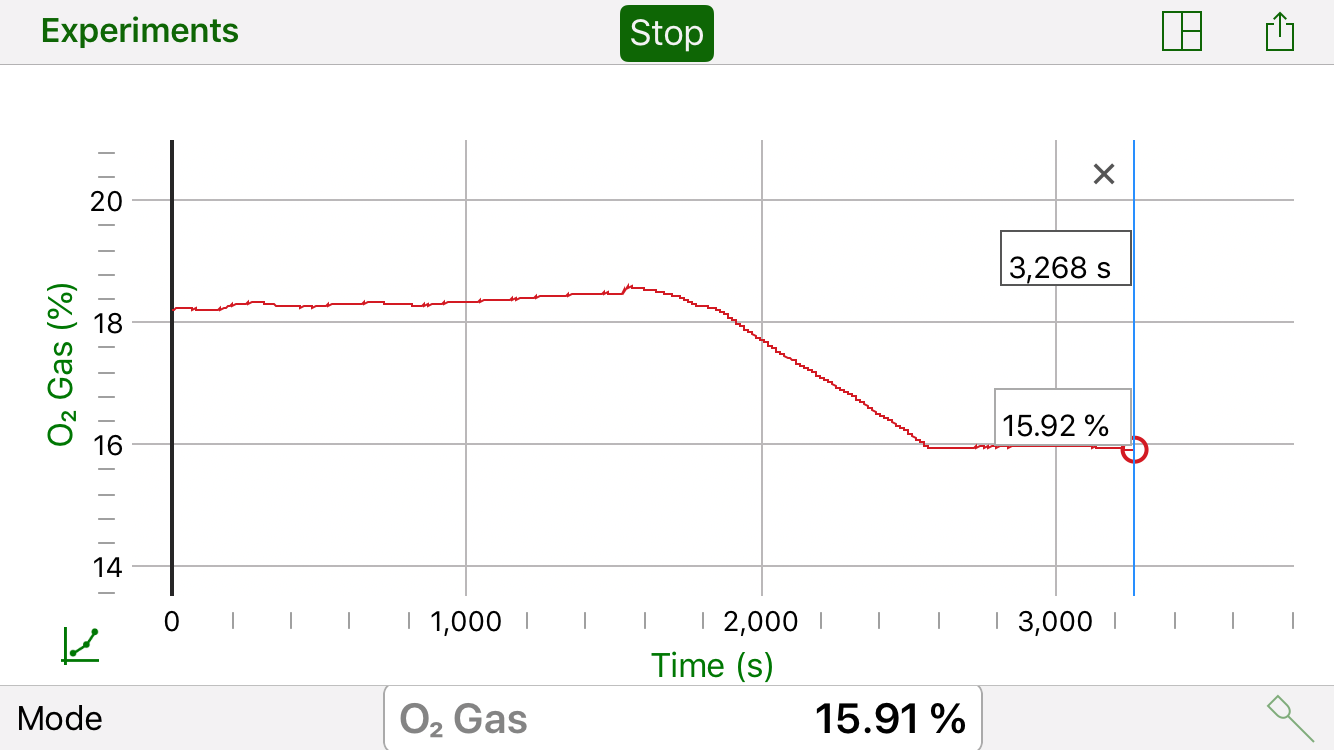
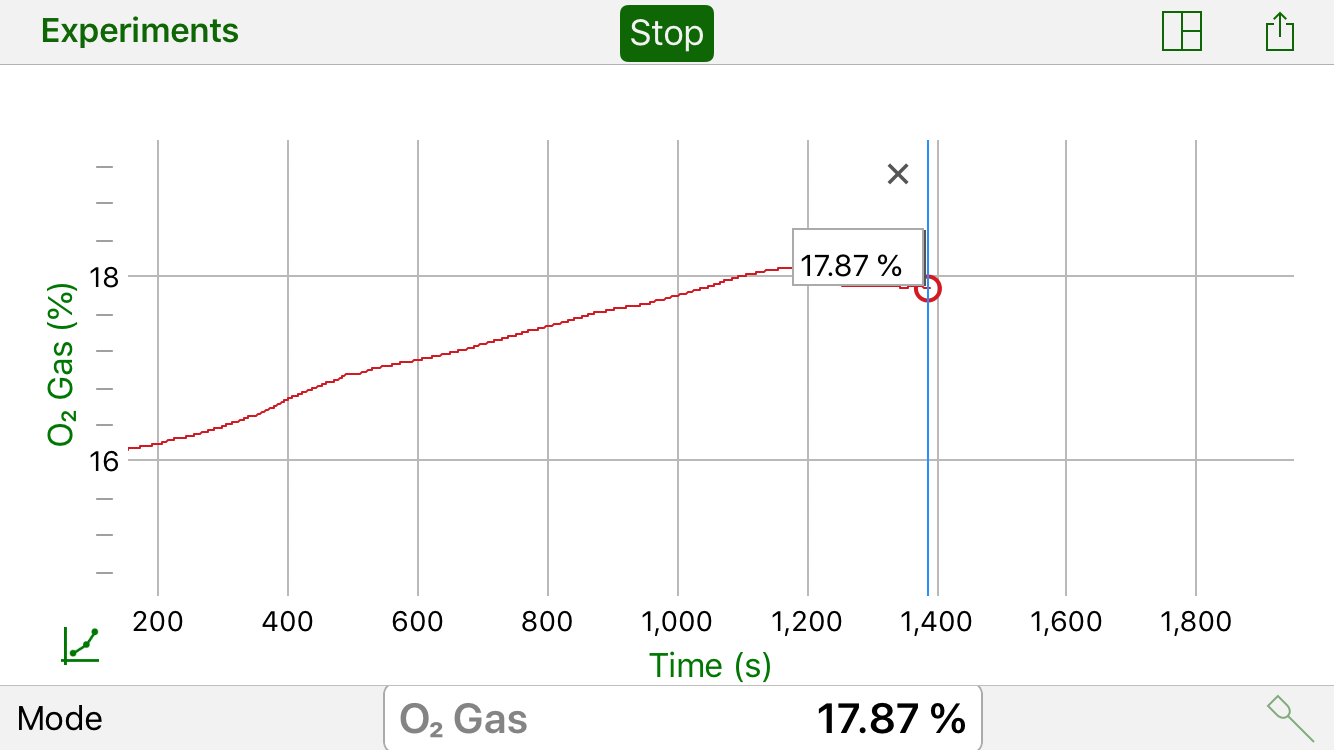
And upon landing, at 10,000 feet the cabin O2 level rose as landing apporached.
Of course the usefulness of the Vernier Go Direct O2 Gas Sensor is not limited to those out-of-classroom experiences risking life-and-limb or other hyphenated landscapes. Classic science experimentations are the Vernier Go Direct O2 Gas Sensor’s forte’. Vernier suggest some popular experiments including testing for catalase under various conditions, measuring oxygen consumption at rest and after exercise, measuring the change in gas produced during photosynthesis, and comparing the rates of cell respiration in germinating and non-germinating peas.
Science by Candlelight
A kitchen-table experiment I ran with the Vernier Go Direct O2 Gas Sensor involved a cookie jar and a candle. Watching a candle burn out in a closed environment is a staple of science education, and of all the variants of that experiment, none have used the Vernier Go Direct O2 Gas Sensor until now. Watching the O2 level drop right next to the flame was insightful. It immediately raised the question of at what relative elevation did the candle go out? Turns out that’s equivalent to about 10,000 feet. So the next question is can you burn a candle at 10,000 feet? And from there the questions just piled up. Ahh, such is science.
One observation that a high school junior noticed when running the experiment a few times is that at the lower oxygen concentrations, the BIC lighter used to ignite the candle would not light until there was enough oxygen back into the container. In other words, the candle could not be relit until the O2 level inside the container rose to at least 17%.
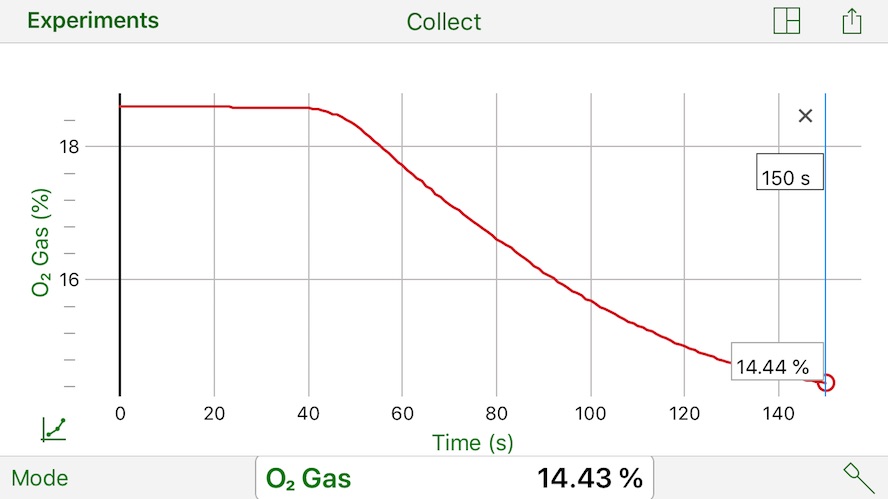
To enhance the capabilities of the Vernier Go Direct O2 Gas Sensor, I made a stand to keep the Vernier Go Direct O2 Gas Sensor upright. With nothing more then the cut-off top and bottom of a water bottle, a conical stand for the sensor materialized. Just lop off the top of a plastic water bottle. Open the top just big enough for the sensor to fit through, and cut the bottom a few centimeters below the business end of the sensor. Then cut a few triangular openings into the base and you are good to go. Another option I drew upon was to repurpose a flashlight holder that allows the Vernier Go Direct O2 Gas Sensor to be used in various situations while supported, padded, hanging, and upright.
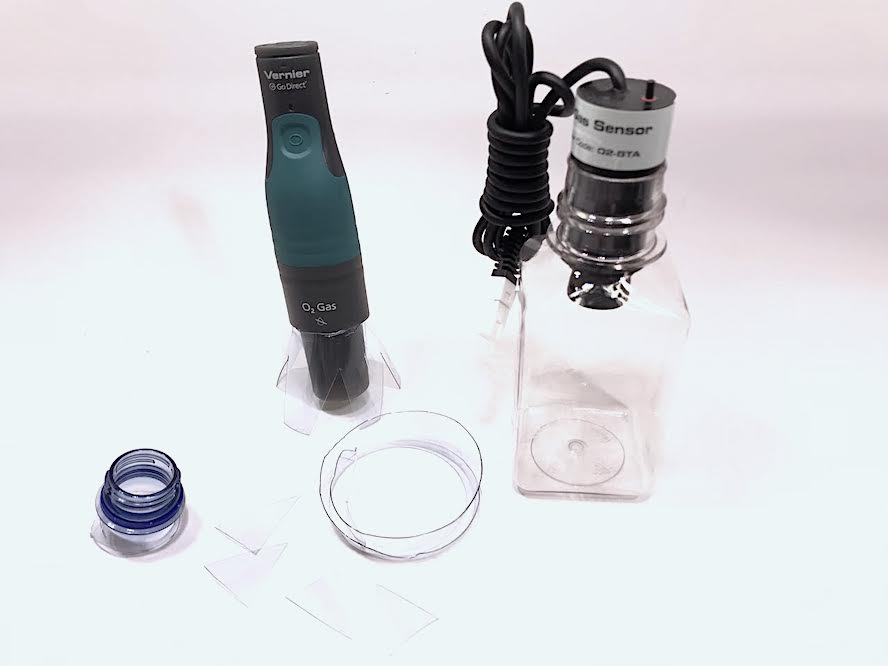
The easiest upright storage method, however, is to use the included 250 mL gas sampling bottle (Nalgene bottle with lid).
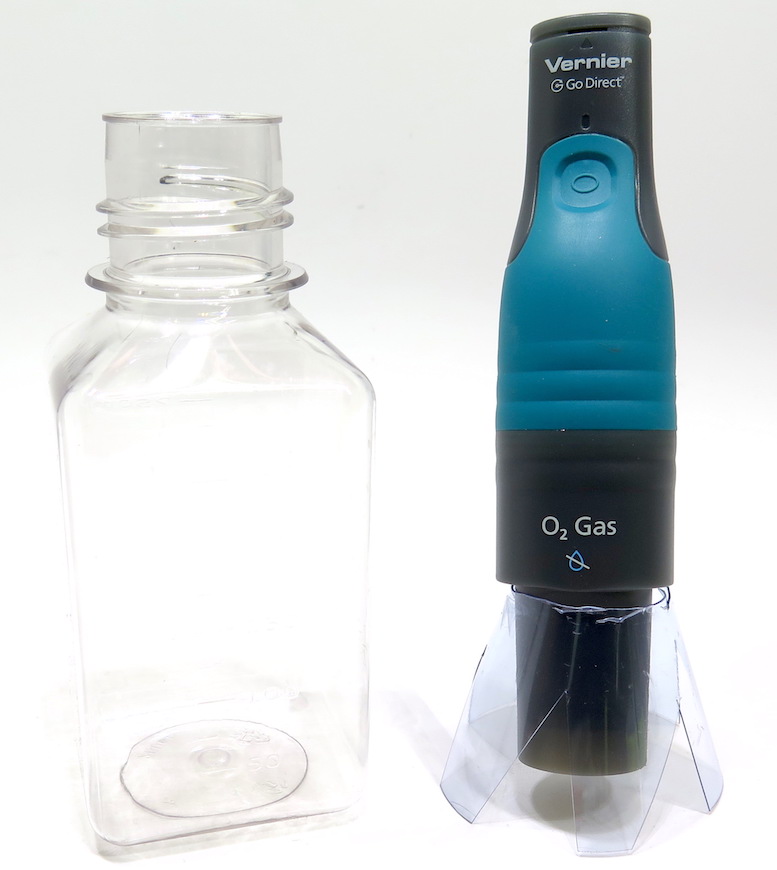
Stand Upright
The nature of the Vernier Go Direct O2 Gas Sensor requires that it be stored upright to maintain its effectiveness. According to Vernier, “The cell contains a lead anode and a gold cathode immersed in an electrolyte. Oxygen molecules entering the cell are electrochemically reduced at the gold cathode. This electrochemical reaction generates a current that is proportional to the oxygen concentration between the electrodes. The sensor output is a conditioned voltage proportional to the reaction current.” Further, Vernier’s website states, “As your O2 Gas Sensor ages, the readings will decrease. This is normal, as the chemicals in the electrochemical cell are depleted. It does not mean the sensor is no longer functional; rather, it simply requires that you perform a calibration and store it as described previously.”

I got my first Vernier O2 gas sensor last century. Its much like the cabled version still available from Vernier, but with harder edges, more primitive billboarding, and an aggressive calibration button. The latest cabled version has a smooth domed top, pleasant green O-ring dampeners, and a large “OXYGEN” statement declared around the core of the unit.
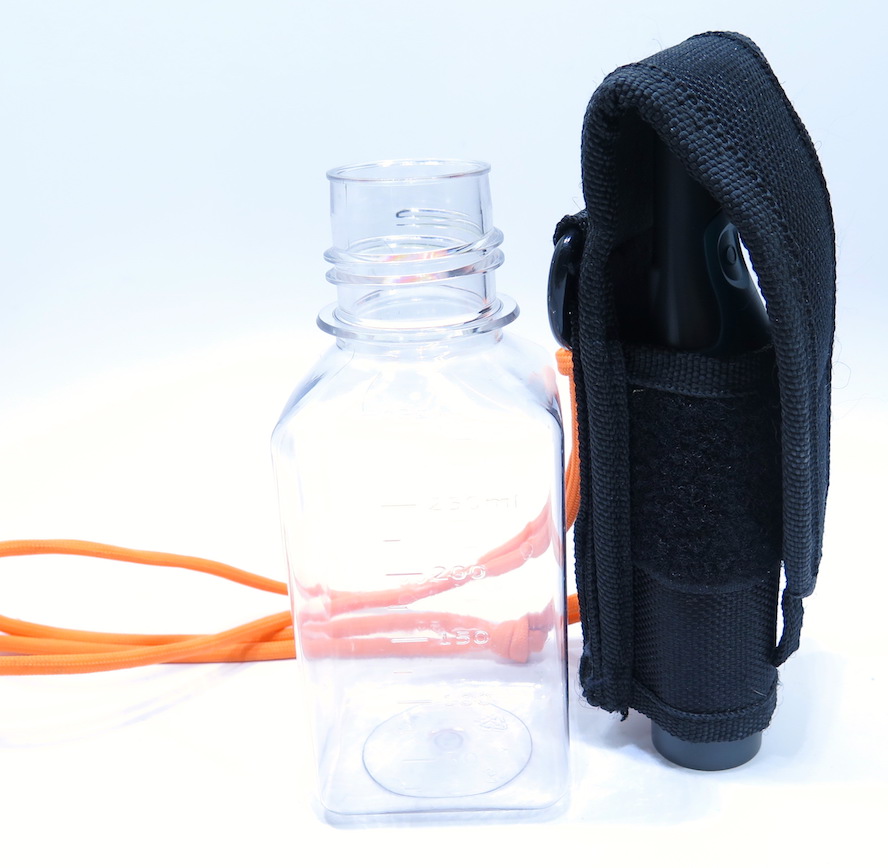
Regardless of the unit, the nature of an O2 sensor has some limitations with regard to storage orientation. Those suggestions are more like warnings if you want to stretch the maximum life out of your O2 sensor.
Think Outside the Analog
What I find interesting, as an aging science teacher, is that we are finally able to push the boundary of what we want to do beyond just what we can do. The Vernier Go Direct O2 Gas Sensor pushes the boundary of experimental measurement forcing a teaching evolution beyond the analog. We can now fulfill the dream as science teachers to where our students leave us behind as they accelerate past us. By standing on our shoulders and jumping towards the sky they begin to fly!
Disclaimer: The views expressed in this blog post are those of the author(s) and do not necessarily reflect the official position of the National Science Teaching Association (NSTA).



